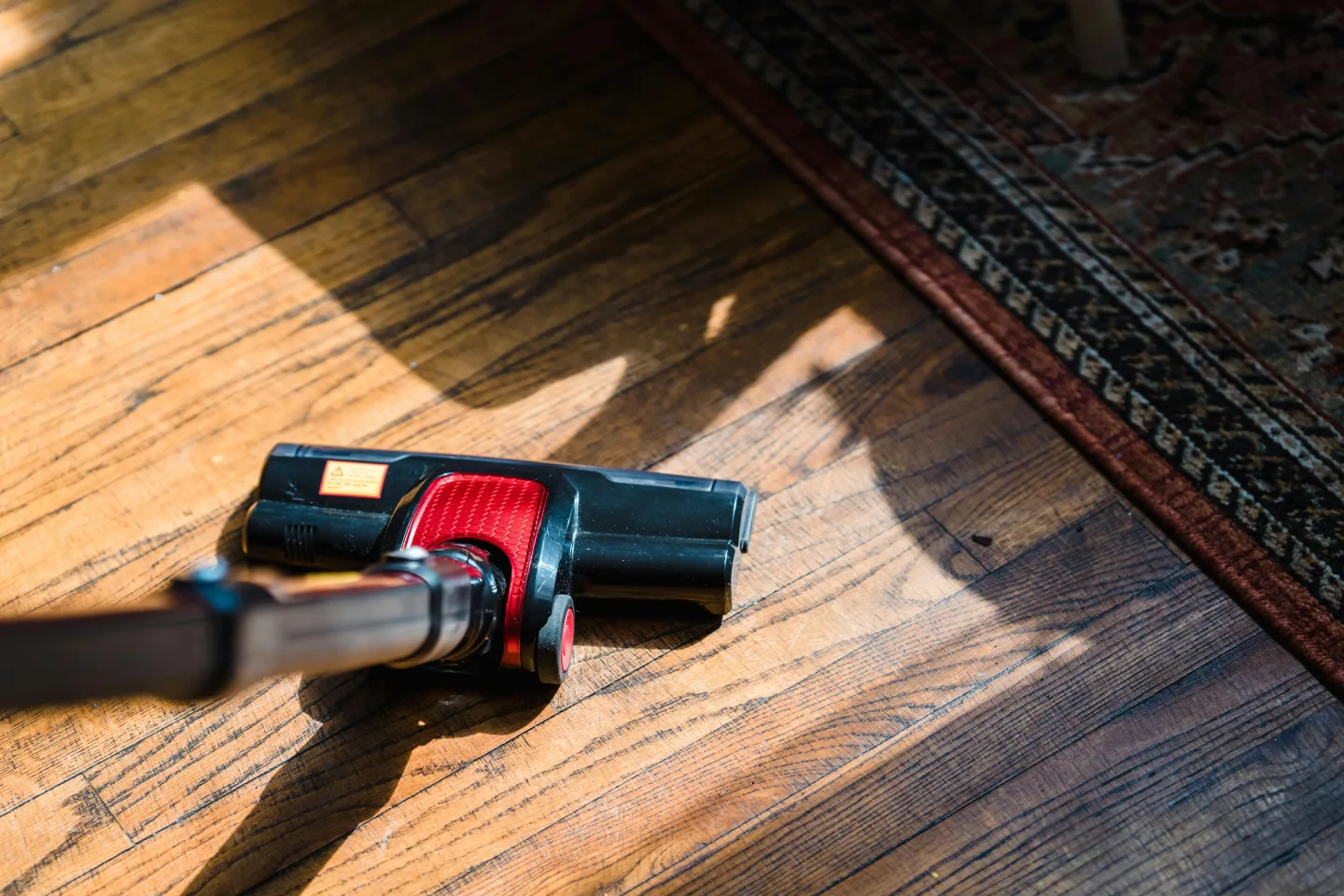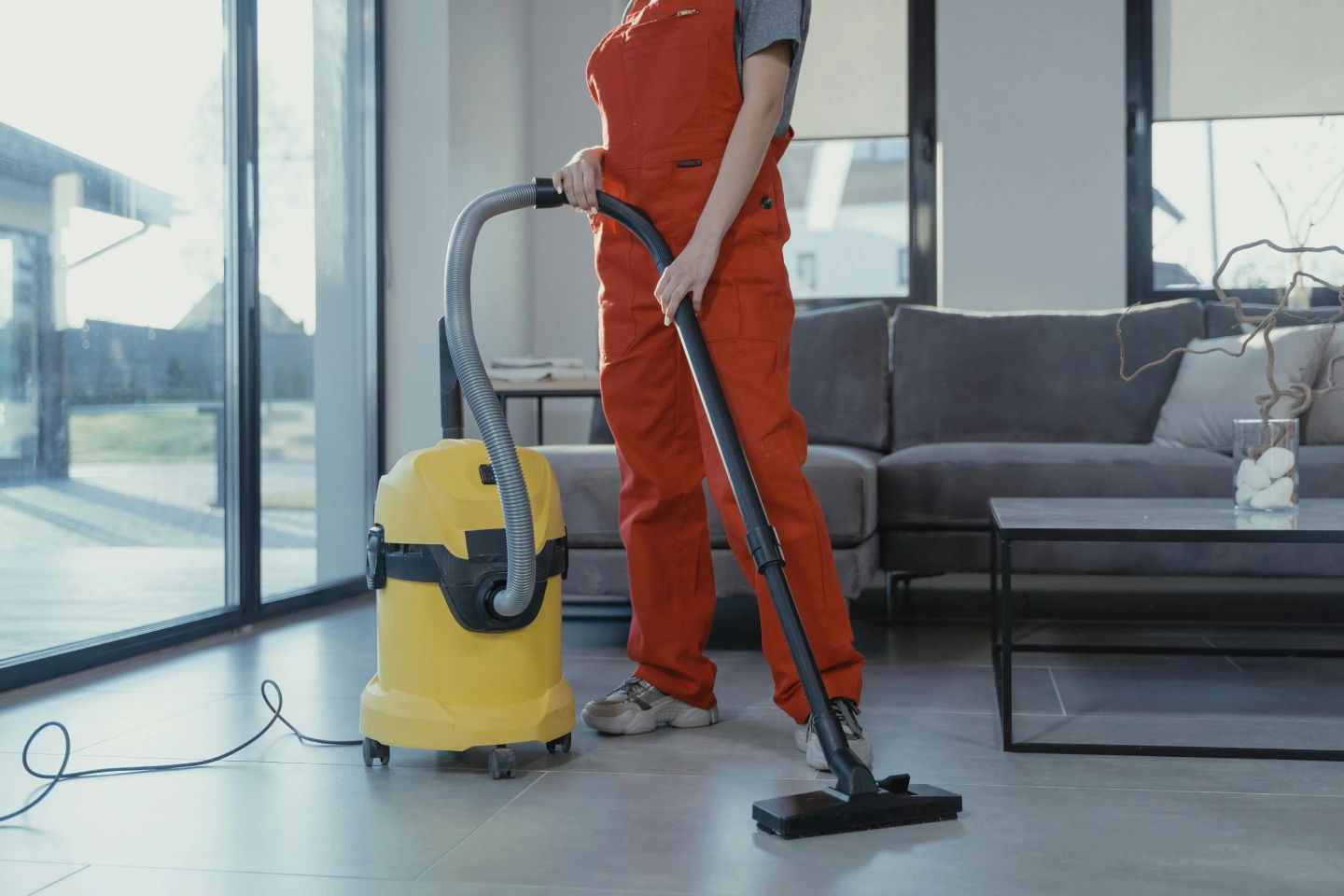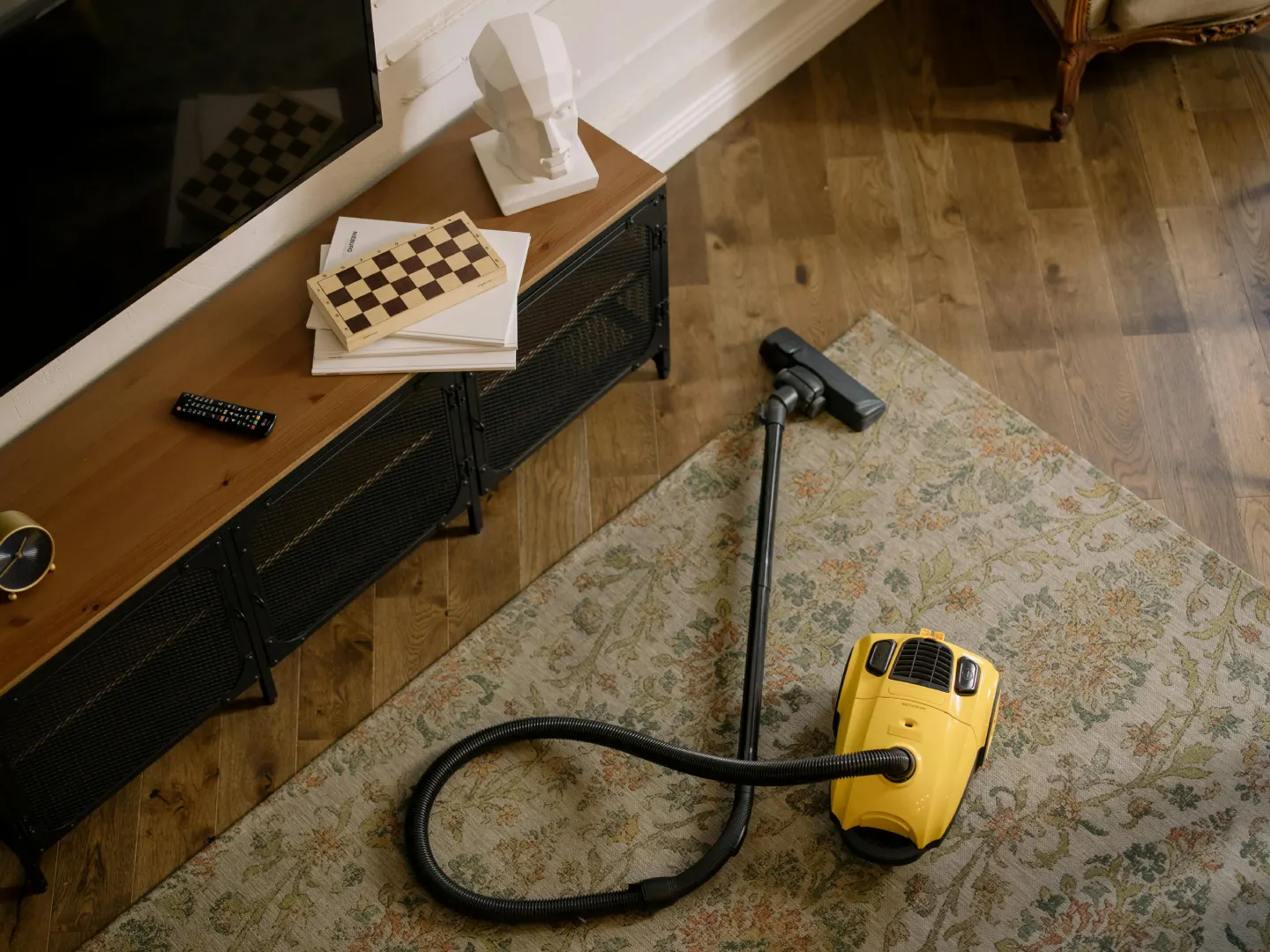Best Tips on How to Vacuum Floors the Right Way

Do you know how to vacuum floors safely and effectively? “It might seem simple, but learning to vacuum floors the right way takes time and experience,” said cleaning experts. It’s more than just plugging the appliance in and vacuuming! Before using this incredibly useful machine, you should decide on the type of vacuum you need depending on the type of flooring you have, ranging from carpets to hardwood floorings, and how often you need to vacuum. Take a look at the vacuuming guidelines below to learn the art of right vacuuming.
Follow a Routine
Try to have a regular vacuuming schedule so that later maintenance costs do not harm your budget. Don’t wait until the floor or the carpets look dirty; it means that it’s already too late to take any action. Put this house chore in your daily schedule so that it takes less time and effort than a massive deep floor cleaning with places caked with dirt and dust.
Choose the Right Vacuum
First of all, you should decide on the right type of vacuum you need based on the size of the room, the kind of flooring, and the amount of use. You can choose from beater bars to those without a beater. The former works well with natural materials. For small spaces, one vacuum does the work, but larger houses need a central vacuum for better access and results. For edges, use a crevice tool so as not to break the baseboard.
Clean the Vacuum Machine

Whether an electric vacuum or a robot one, the inner workings of the appliance need to be cleaned every once in a while; when cleaned properly, the canister functions better in sucking up all the debris. Check the health of the canister and the adequacy of airflow once a month to get better results. Also, empty the vacuum bag after each use. With these little tips on maintenance, the machine will run smoothly without having to keep vacuuming the same place over and over.
Adjust the Settings
The power of the machine should match the type of the surface, as using the wrong settings makes it less effective. After you have vacuumed edges and hard surfaces, switch to the roller brush and adjust the cord and height of the brushes. You should make sure that the vacuum head is lowered to the proper height suitable for the floor. Be careful with the power settings; otherwise, carpet fibers will be crushed if the machine has contact with the fibers and not with the surface.
Sweep, Vacuum, or Mop?
If you are indecisive about whether to vacuum or sweep, go for the first one. To remove all the dirt and debris, you need to vacuum the floor deep. Though sweeping is effective, the vacuum has that strong suction to remove all the dirt from the floor, walls, and even doors, as well as windows. Straight after you have vacuumed, mop the floor with water and floor-specific cleaners to get rid of any extra crumbs and pet fur. If you feel the house is dusty, never mop before vacuuming since the combination of dust and water makes mud, which is really difficult to remove. In this way, mopping streaks do not dry up. You can do this routine as many times as you feel necessary. Naturally, rooms with high traffic, such as the kitchen and bedroom, require more cleaning than other places. Vacuum them as often as you use or as little as once or twice a month.
Vacuum Slowly

It doesn’t matter which type of vacuum you have; to deep clean, you need to go slowly and smoothly at the right speed. Begin vacuuming from one edge of the walls and carpets to the opposite edges, then move forward in a straight line. Move backward slowly across the floor to collect all the dirt. This allows the appliance’s vibration to loosen any debris. In this way, fibers and trapped dust are picked up, revealing any dirt or debris hidden underneath. It’s always worth going over the same spot several times, especially with fluffy pets. In the second pass, overlap the vacuum to cover the whole area.
Vacuum in Two Directions
Do not vacuum only up and down; you should also turn ninety degrees and vacuum side-to-side if you have worked north to south, and vacuum east to west in the next pass. It helps to catch small bits of debris and crumbs, and you can make sure the surface is vacuumed twice.
How to vacuum carpets?
Offering comfort, warmth, and style, carpets are the number one choice for house flooring. So, it’s really important to keep them clean and new. To do so, you need a vacuum cleaner, carpet cleaners, and clean clothes. You can choose to vacuum using a carpet-specific machine or a central vacuum system. The former features motorized brush-heads and is available in most places. The latter best suits fully carpeted houses and requires a high budget but features a more powerful suction. To start, first, remove furniture and small objects. Then, adjust the height levels and settings properly to the type of carpet; otherwise, it functions ineffectively. Next, vacuum the carpet smoothly back and forth across the entire area at least twice a week, especially in high-traffic places. Don’t be rushed; go slowly to make sure all the dirt and debris are cleaned. Vacuum several times, overlapping the previously covered spots, starting from the edge corner of the carpet to the opposite corners where most of the dirt falls. In this way, debris stuck in the pile of the carpet is completely removed. If the carpet is wet or stained, use a clean cloth to dry it. Then, add stain remover to the surface. If you have pets at home, vacuum all the carpets or rugs once a day.
How to vacuum hardwood flooring?

Popular for their durability and aesthetics, engineered hardwood floorings are more difficult to maintain than carpeting. The reason is that the flooring is not porous, and the dirt gets stuck due to its lack of friction. You can use a vacuum cleaner specifically designed for cleaning hardwood floors. They feature soft rubber wheels, water jets, and gentle suction. Thus, the best way to remove debris is to vacuum. First, attach the brush head and adjust height levels close to the surface. Then, start vacuuming from one corner to the other. After that, you can mop for a deeper cleaning to wash the floor. Remember not to use a wet mop since moisture warps up the floor.
How to vacuum vinyl floorings?
Vinyl has become increasingly popular in recent decades for its versatility, water resistance, and appellative look. Since it is made of flexible materials, it can be easily damaged by hits and crashes. So, you need vacuum machines designed for luxury vinyl floorings. They are smaller in size and lighter. Start by lifting furniture to prevent scuffs. Then, place the brush head directly over the nozzle and adjust the height so that it is near enough to the surface. Move slowly without applying pressure so as not to damage the surface. After vacuuming, use micro-fiber mops and soft brooms to clear loose dirt delicately. Remember not to use abrasive cleaners to prevent scratching. Repeat this routine every two weeks.
How to vacuum laminate floorings?

Durable and stylish, laminate floorings are rather costly. But they require little maintenance. First, adjust the brush head over the nozzle about halfway between the bristles and the nozzle. Then, move in straight lines to clean the hard surface. Keep in mind that moving in circles is not effective! Later, you can use a soft bristle brush to sweep or mop to remove any loose dirt. Clean laminate floors at least once a month.
How do you vacuum furniture?
It is suggested that furniture be vacuumed first since it causes small amounts of dust to fall on the surface beneath the furniture. For larger pieces, such as large sofas and beds that are difficult to move, vacuum as far as possible or switch to the hose with the powerhead attachment. For hard-to-reach pieces like shelves and light fixtures, use cordless machines to tackle dirty mattresses.
How to hand vacuum?
Sometimes, vacuum cleaners don’t work well for removing water spills or pet hair. Instead, try hand vacuuming the floor. First, remove as much of the larger debris as possible. Then, start cleaning in straight lines across the entire area using floor-specific pH-neutral cleaners.



Comments